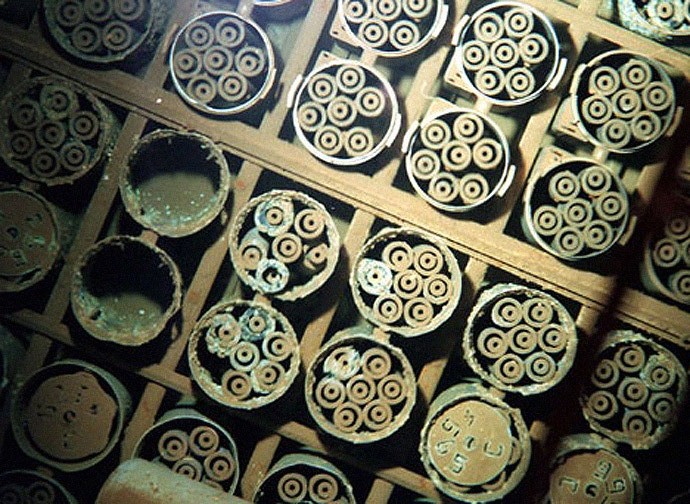>>The above issue may be unfair to present generation, but we future generation of Malaysia are ready to face any manner dealings in order to save the planet and secure upcoming generation. It also can be said as cycle of life where there is usage need to do replacement and backup the spent used material/fuel......
 Spent nuclear fuel, occasionally called used nuclear fuel, is nuclear fuel that has been irradiated in a nuclear reactor (usually at a nuclear power plant) to the point where it is no longer useful in sustaining a nuclear reaction.
Spent nuclear fuel, occasionally called used nuclear fuel, is nuclear fuel that has been irradiated in a nuclear reactor (usually at a nuclear power plant) to the point where it is no longer useful in sustaining a nuclear reaction.An example of this effect is the use of nuclear fuels with thorium. Th-232 is a fertile material that can undergo a neutron capture reaction and two beta minus decays, resulting in the production of fissile U-233. The SNF of a cycle with thorium will contain U-233, an isotope with a half-life of 160,000 years. Its radioactive decay will strongly influence the long-term activity curve of the SNF around 1,000,000 years. A comparison of the activity associated to U-233 for three different SNF types can be seen in the figure on the top right.
The burnt fuels are Thorium with Reactor-Grade Plutonium (RGPu), Thorium with Weapons-Grade Plutonium (WGPu) and Mixed Oxide fuel (MOX). For RGPu and WGPu, the initial amount of U-233 and its decay around 10E5 years can be seen. This has an effect in the total activity curve of the three fuel types. The absence of U-233 and its daughter products in the MOX fuel results in a lower activity in region 3 of the figure on the bottom right, whereas for RGPu and WGPu the curve is maintained higher due to the presence of U-233 that has not fully decayed.
The use of different fuels in nuclear reactors results in different SNF composition, with varying activity curves.
Nuclear reprocessing can separate spent fuel into various combinations of reprocessed uranium, plutonium, minor actinides, fission products, remnants of zirconium or steel cladding, activation products, and the reagents or solidifiers introduced in the reprocessing itself. In this case the volume that needs to be disposed of is greatly reduced.
Alternatively, the intact Spent Nuclear Fuel (SNF) can be disposed of as radioactive waste."WE ARE THE YOUNG GENERATION, WE ARE THE YOUNG MALAYSIANS,IT IS OUR FUTURE WE ARE TALKING ABOUT, AND WE WANT A SUSTAINABLE,GREEN,BEAUTIFUL, SECURE PLANET THAT WE CAN SHOW OUR OWN CHILDREN WITH OUR OWN EYES INSTEAD OF JUST THROUGH PICTURES IN HISTORY BOOKS-WE WANT FUTURE AND LET US MANAGE THE WASTE"
No comments:
Post a Comment